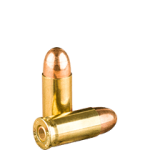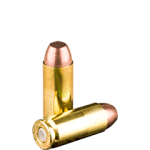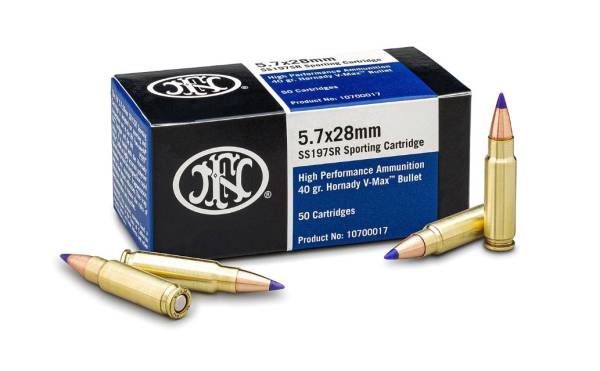Description
According to Cartridges of the World, the .38 Special cartridge was officially introduced in 1902, and has been a significant part of the world of firearms for over 100 years. A rimmed, centerfire round, the .38 Special is most often seen in revolvers. But other firearms, including carbines and semi-automatic pistols, have been chambered for this caliber.
Throughout the times, it’s been known as the .38 Smith & Wesson Special, the .38 Colt Special, 9×29.5mmR, or 9.1x29mmR. In its standard round, the .38 Special weighs 158 grain (gr), features a total cartridge length of 1.455 inches, and travels at 755 feet per second (fps).
Before the conception of the .38 Special, the United States military’s primary cartridge was the .38 Long Colt which had limited stopping power and had proven itself ineffective as a combat load. The military needed ammunition that was more powerful, more accurate, and more versatile. Looking at the 38 Special vs. 38 Long Colt, the standard was beaten – which was just what the firearm manufacturers intended to do. 38 Special ammo has more power, more accuracy and more versatility than its predecessor.
With its power and punch, the .38 Special has demonstrated its effectiveness and is still popular today – making it pretty easy to find cheap .38 Special ammo.
The Development of the .38 Special
From 1892 through 1911, the .38 Long Colt served as the official revolver of the U.S. Army, but as time progressed and the M1892 revolver went through six model modifications, it became evident that the cartridge was less than sufficient. This was discovered first during the Spanish-American War, and then again during the Philippine insurrection after the turn of the century.
While the ammunition wasn’t accurate, it had more problems than just limited stopping power. In one account from 1905 it was reported that a prisoner on the island of Samar attempted to escape and ended up in hand-to-hand combat with the American soldier who was guarding him. The prisoner was shot four times at the close range, three bullets entering his chest and one his hand, yet it was the following blow to the forehead, administered from the butt of a Springfield carbine, that eventually stopped the man.
Due to the military’s discontent with the options of the time, gun manufacturers were designing and creating new cartridges, trying to get the power and force the military needed while still keeping cartridges safe, lightweight, and affordable. In 1902, Smith & Wesson released the .38 Special in its Military and Police model revolver, and it quickly rose to its well-deserved fame.
In 1909, Colt released its own revolver chambered for the .38 Special. While most aspects of the .38 Colt Special cartridge were the same as the .38 Smith & Wesson Special, the Colt featured the flat-pointed bullet that became the classic .38 Special shape.
As time passed and the cartridge demonstrated that it was effective and efficient, firearm manufacturers started moving chambering beyond the revolver, and a number of lever-action rifles were chambered in the caliber, including Winchester models 1866, 1873, and 1892.
What are .38 Special Cartridges used for?
The .38 Special had a rich service life and was used by all branches of the military in the years between 1935 and 1985. Most frequently used as a self-defense and survival weapon by aircrew members, it was also issued as a duty sidearm to military police and security personnel.
From the 1920s through the 1990s, police departments across the country utilized the power and function of the .38 Special cartridge, and it was used in many sidearm firearms throughout World War I and World War II.
Beyond the military and law enforcement, the .38 Special was, and still is, highly acclaimed as an accurate cartridge and remains popular among target shooters – with the revolver being the most common type of handgun used for target shooting .38 Special rounds.
Because the .38 Special has stopping power and limited recoil, it’s become a favorite among those who train for self-defense situations and concealed carry. With the availability of small, snubnose revolvers chambered for the caliber, there’s little doubt why so many carry it. These snubnoses can easily be carried in an ankle or pocket holster without any hassle or discomfort, making them readily accessible if and when the need strikes.
While the .38 Special cartridge isn’t considered hunting ammunition, and most would struggle to take down big game animals with it, the cartridge is effective on small to medium game animals and varmint.
What Is a .38 Special Wadcutter?
Wadcutters are a special type of cartridge that features a flat-fronted bullet. Designed specifically for shooting targets, the .38 Wadcutter creates a small, clean hole in the paper, allowing for easy scoring in target shooting competitions.
In the .38 Special, the wadcutter has also become popular with self-defense enthusiasts. Because of the short barrel in snubnose revolvers, the wadcutter design improves velocity, as well as lethality. Like other loads, there is a wide range of wadcutter ammo, from full wadcutters for target shooting to semi-wadcutter hollow points, which make a great all-around bullet for just about everything – including plinking in the backyard and self-defense.
What Are the Types of .38 Special Ammo?
Like other firearm cartridges, this .38 ammo comes in a variety of forms and functions. Unlike many other firearms, most .38 Special revolvers can and will reliably fire a variety of cartridges and loads, from grains to pressure, without mishap, even when this variance is loaded into the same cylinder.
Because of this, many shooters opt for guns chambered in .38 Special simply for its variety of loads. Also, many handloaders have come to appreciate the .38 Special cartridge, and it’s proven to be a favorite among them.
Some of the most common .38 Special loads include:
Full metal jacket: These standard load cartridges feature a lead bullet covered in a harder metal, fitted in a casing made of brass, steel, or aluminum
Jacketed hollow point: Made for self-defense, these .38 Special cartridges have a bullet designed with a in the middle, increasing their ability to expand when they hit a target
+P: Originally designed for the FBI, .38 Special +P ammo is loaded under higher pressure, increasing velocity and power
+P+: Loaded under more pressure than the +P, this ammo is often reserved for those on duty, including law enforcement and military
Wadcutter and semi-wadcutter: These flat-tipped bullets are primarily used in shooting at paper targets, as they improve the judges’ ability to score without errors due to cutting clean through the paper
Frangible: Unlike JHP rounds, frangible bullets don’t expand on impact; instead, these .38 Special bullets explode and shatter into tiny fragments (as long as the target is harder than the bullet), eliminating the risk of over penetration; also referred to as Advanced Energy Transfers (AETs)
Total metal jacket (TMJ): Similar to FMJ ammo, the difference with .38 special TMJ is that the lead bullet is completely encased in copper and leads to less lead exposure; in the FMJ bullet, on the inside of the casing, there’s a spot that isn’t covered in the hard metal jacket
Round nose: While most ammo comes with a round nose, the standard issue .38 Special features the flat tip that became popular with the 1909 Colt, but the option is still available for those who want it
Popular Brands of .38 Special Cartridges
Most ammunition manufacturing companies make .38 Special cartridges. Some of the most popular brands include:
Federal
Fiocchi
Hornady
Magtech
Remington
Winchester
How Did the .38 Special Revolver Get So Popular?
There are many things that contribute to the success of the .38 Special cartridge and the firearms that are chambered for it. Some of the most influential factors include the ammo’s accuracy and its minimal recoil.
Many handguns chambered in .38 Special are small revolvers, which are easy to carry and to conceal. These pistols tend to be reliable and have a lower failure rate than many semi-automatic firearms, simply because there’s less to go wrong. This combination of factors makes .38 Special revolvers a popular choice for many people, but especially those who carrying concealed for self defense and women, who often look for firearms that are powerful, accurate, and easy to use.
What’s more, bullets for a .38 Special are fairly inexpensive, especially when purchasing bulk ammo, and it makes the revolvers that house it a popular choice among those who like to shoot regularly. In many ways, the .38 Special cartridge is to the revolver what the 9mm ammo cartridge is to the semi-automatic pistol – the best, all-around ammo and top choice for many gun enthusiasts.
Some of the most popular guns chambered in the .38 Special include:
Smith & Wesson Model 36 Chief’s Special
Smith & Wesson Model 442 Airweight
Colt Detective Special
Ruger LCR
Taurus Model 85
What Is a .38 Special Snubnose?
Discussions of the .38 Special will no doubt include references to the iconic .38 Special snubnose revolver. These “snubbies” are short-barreled revolvers and are often carried as a backup gun in a pocket or calf holster by law enforcement and civilians alike. The Smith & Wesson Model 642 Airweight snubnose is a great example of this classic weapon that still gets use today.
Although today’s gun manufacturers make factory snubnoses, that wasn’t the case with the originals. At some point, someone, somewhere decided to take a risk and remove the end of their revolver. Perhaps they recognized the benefits a short-barrelled revolver could bring, from the quicker draw to the ability to conceal. Regardless of the reason, it broadened the concept of the revolver and what could and could not be done with it.38 Special vs. 357 Magnum
When it comes to the .38 Special and the .357 Magnum, there are differences in the cartridges, but not the bullets. As a matter of fact, the .38 Special, .38 Short Colt, .38 Long Colt, and .357 Mag all have the same sized bullets, which measure .357 inches in diameter (making them technically .36 caliber or 9.07mm bullets). The .38 in .38 Special references the .38-inch diameter of the cartridge casing.
If you compare the .38 Special to the .357 Mag, it’s easy to see that the .357’s casing is about one-tenth of an inch longer than the .38 Special, and that small space holds a whole lot of power. For instance, in one comparison, the same type of .38 Special and .357 Mag loads were fired from the same revolver. Where the .38 Special came in with a velocity just over 940 fps, the larger .357 Mag cartridge traveled over 1,350 fps. The .357 had deeper penetration and a bigger impact.
Interestingly enough, any firearm chambered for the .357 Mag can fire a .38 Special cartridge without issue, but the reverse is NOT true. It is unsafe to fire the larger ammunition from the gun chambered for the .38 Special. There are many reasons to opt for the less powerful ammo when shooting a firearm made for the .357 Mag – including less recoil, a quieter boom, and cheaper ammo. These revolvers are also easier to handle with .38 Special cartridges, especially for small-framed shooters, including women and teenagers.
Throughout the last century, the .38 Special has rightfully earned its place among the best firearms cartridges in the world through its qualities of accuracy, power, concealability, and availability. It’s proven itself effective as a weapon for law enforcement, military personnel, and civilians who wish to carry concealed.
FAQ
What is the best 38 Special ammo for self-defense?
When choosing a .38 Special for self-defense, opt for jacketed hollow points (JHP) or wadcutters (WC), especially if carrying a snub nose. JHP bullets are traditional self-defense rounds because they’re known to expand on impact significantly more than full metal jacket (FMJ) bullets and, therefore, have more stopping power. Wadcutters were designed for paper target shooters, as these bullets are flat and sit flush with the casing. They also “cut” through paper (unlike round nose bullets that tear), making it easier to score. While this doesn’t sound effective for concealed carry, these rounds are often used in snub-nosed revolvers. Because of the short 2-inch barrel length in snubby revolvers, a JHP bullet may not reach the necessary velocity to expand on impact, making it only as effective as a FMJ bullet. But the wadcutter cuts through soft tissue in the same manner it cuts through paper and has surprisingly good wound ballistics.
What is 38 Special +P ammo?
Like other +P ammunition, .38 Special +P ammo is loaded to a higher pressure than standard .38 Special rounds. This added pressure gives the bullet a higher velocity and more power. Although many modern revolvers chambered in .38 Special are designated safe for +P, always check the firearm to ensure it can withstand the increased power.
What is 38 Special wadcutter ammo?
Wadcutters are specialized rounds designed for shooting paper targets. Wadcutter bullets are flat and sit completely nestled in their casing, flush with the top of the shell. These projectiles “cut” through paper, unlike traditional bullets which rip or tear, make the wadcutters easier to score. Wadcutters have become popular for self-defense, especially in those carrying .38 Special snubnose revolvers.
What is the difference between 380 and 38 Special ammo?
While the .380 Automatic Colt Pistol (ACP) and the .38 Special have nearly the same diameter bullets (with the .38 Special measuring only .002 inch wider), there’s a significant difference between the rounds. The cartridge of the .38 Special measures 1.155 inch, while the .380 ACP sits in a case only .680 inch long. This allows for more powder, which equals more power and bang. This results in the .38 Special carrying much more bang than the .380.
What is the most powerful 38 Special ammo?
The most powerful .38 Special ammo are typically specialty jacketed hollow points (JHP). These rounds are designed for self-defense and have more stopping power than traditional full metal jacket cartridges. JHP bullets expand on impact, increasing their stopping power and reducing the risk of overpenetration. Remington, Hornady, and Federal all make .38 Special ammunition that is extremely powerful.





